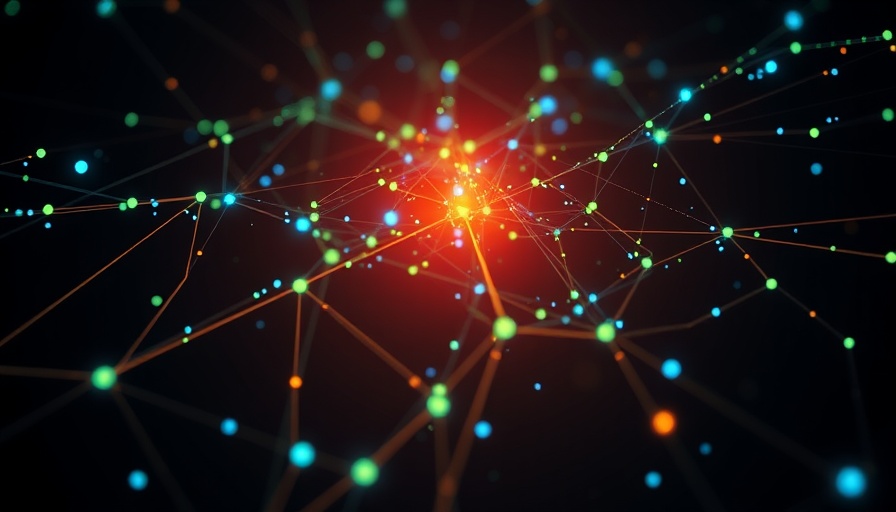
The Dawn of Gen3 AI: What Claude 3.7 and Grok 3 Mean for the Future
In a dramatic evolution within the AI landscape, the introduction of Claude 3.7 and Grok 3 represents a considerable leap forward in the capabilities of artificial intelligence. These Gen3 models, developed by leading tech minds, including Elon Musk's xAI for Grok 3, are not just simple extensions of their predecessors but monumental shifts towards more sophisticated and intelligent designs.
Unpacking the Power Behind Gen3
One of the most astounding features of these models is their deployment of computing power. Grok 3, in particular, has been trained using an amount of computing power an order of magnitude greater than the current mainstream AI, GPT-4. This translates to over 1026 FLOPS—an unimaginable scale that is equated to the computing capacity of a modern smartphone running for 634,000 years.
The improvements aren't skin-deep; they stem from critical principles known as Scaling Laws. First introduced by OpenAI, these laws reveal that increased computing power leads not just to better performance, but that time spent on problem-solving also enhances AI capabilities. Such insights are revolutionizing how we train and utilize AI technologies.
The Creative Genius of Claude 3.7
Claude 3.7 has showcased a groundbreaking capability: it can generate interactive and engaging content, such as 3D visualizations, through natural language prompts. For example, a simple request to visualize a proposed educational tool resulted in a detailed interactive display that takes complex academic concepts and translates them into engaging formats.
This ability points towards a future where AI isn't just a mechanical assistant but becomes an intellectual partner in various fields, pushing the boundaries of creativity and problem-solving.
From Automation to Augmentation: A Mindset Shift
The introduction of Claude 3.7 and Grok 3 signals a critical moment for organizations that utilize AI. Traditionally, AI has been viewed through the lens of task automation, but these advancements invite a reevaluation. Businesses should consider how these AIs can enhance existing capabilities rather than merely automate tasks.
Ethan Mollick, in his analysis, emphasized the need for companies to transition their focus from merely asking, "What tasks can we automate?" to "What innovative capabilities can AI unlock?" This refreshing perspective could lead to vast improvements across industries, generating novel insights and facilitating sophisticated problem-solving.
Real-World Applications: Beyond Theoretical Constructs
Some concrete examples of the transformative possibilities of Claude 3.7 and Grok 3 include educational tools and complex code generation through simple dialogue. Imagine math students building intricate projects guided by AI's capabilities—a reality now feasible thanks to Gen3 advancements. These AI models can analyze academic papers and generate in-depth explorations of the material, demonstrating their potential in research and development.
Exploring the Limitations of Gen3 AI
Despite these impressive capabilities, it’s essential to remain grounded. While Claude 3.7 and Grok 3 are more advanced than their predecessors, they still have limitations and can produce errors. For instance, even during impressive outputs, these models face challenges in maintaining accuracy in complex visualizations or deep analytical tasks.
This keeps the human element paramount. Managers and leaders must not only embrace what AI can do but also recognize its current boundaries, ensuring that AI serves as an augmentation tool rather than a complete replacement of human labor.
A Future Glimpse: The Evolution of AI
The strides made by Gen3 models like Claude 3.7 and Grok 3 foreshadow a future where AI continuously improves and composes increasingly powerful functionalities. With ongoing research and innovation, we can anticipate easier access to high-level AIs that further shrink the gap between human intelligence and artificial capabilities.
As these technologies become mainstream, it encourages both organizations and individuals to explore their features. Experimenting with these models can yield unexpected rewards and foster a deeper understanding of AI’s potential.
In conclusion, the evolution of Gen3 AI models reflects a pivotal moment that could redefine our interaction with artificial intelligence. Claude 3.7 and Grok 3 not only herald enhancements in capability but also invite thoughtful consideration about the future roles of AI in our lives.
 Add Row
Add Row  Add
Add 




 Add Row
Add Row  Add
Add 

Write A Comment